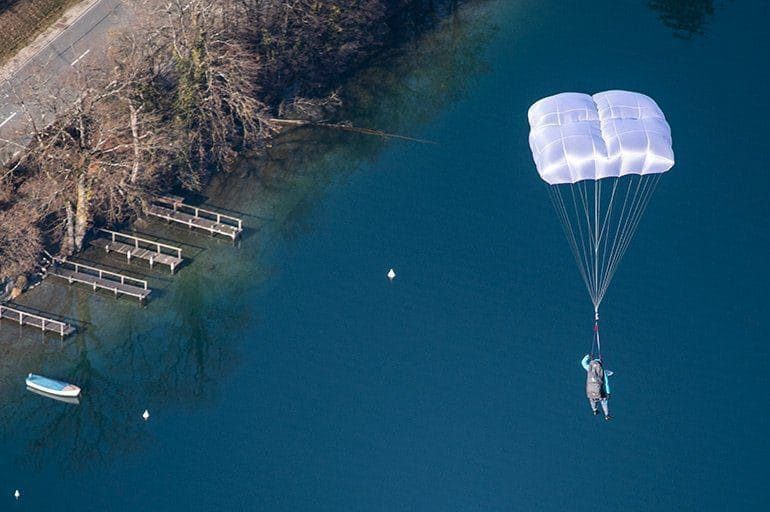No products in the cart.

No products in the cart.

The reserve parachute is a piece of paragliding equipment that can be easy to forget about. While it’s definitely a major piece of your gear, your reserve parachute is gathering dust and doesn’t like humidity, or long extended periods without repack.
It’s very important to take it out regularly for a repack to make sure it works. In fact, as a reference, the FAA requires that a reserve parachute be inspected and repacked every 180 days, or every 6 months, to ensure that it meets all safety regulations. It also ensures a faster smoother opening when you need it.
If you’ve never repacked your reserve parachute, then you’ll probably need some guidance to get started. Let’s look at what you’ll need and how to pack a reserve parachute.
Even if videos are usually very well done by the manufacturer we highly recommend that you go to a “Reserve repack clinic”. You will learn directly from a professional and learn a lot more than from a video. Some places even have systems for you to perform throwing the reserve out of your harness and see the reserve opening and evaluate your packing. You can not get that kind of service from videos.
The first and most important thing you’ll need to do before packing your reserve parachute is reading the manufacturer instructions. This is where you’ll find all of the essential information you need for your specific parachute. Reading the manufacturer’s instructions is important before using any piece of paragliding equipment.
Also if you install the reserve yourself in your harness, any harnesses have specific steps to follow. Usually they are clearly explained in the manufacturer manual.
But again every professional has their own little habits and it is really a benefit to meet these professionals during “Repack clinic”
After you’ve gathered your supplies, it’s time to inspect and repack. Typically, you can find videos as an example, we added a great video done by Supair on how to repack this specific reserve parachute. (But remember that reserves now have different shapes so this video does not apply to all reserves or all brands. This video is for the Fluid square shape so the technique will be different for a round shape, octagonal, or the Rogallo one for example )
Supair Reserve Parachute walkthrough
If you can’t remember the last time the reserve parachute was opened, odds are the reserve fabric needs to breathe, so hanging the reserve 24 hours will be an extra benefit for your reserve.
Typically, the process will involve laying the parachute out with all cords and lines in uniform fashion. You will then fold up the parachute tightly with all pieces snug inside. It’s important to know exactly what you’re doing, since a wrong fold could mean your parachute won’t open correctly.
That’s why we highly recommend going to a repack clinic. It’s definitely the best way to learn proper techniques.
Even going to different clinics, you might learn different techniques and find one that works best for you. The more you learn directly from professionals the better.
So, as you can see, inspecting and repacking your reserve parachute is very important. Each manufacturer will have different requirements, so it may be best for you to have a professional do it for you if you’re unfamiliar with paragliding equipment. Places who offer glider inspections usually also offer reserve repack and sometimes even your instructor will offer that service.
Usually a repack by a professional will cost about $45. So if you are very conscious about it and you do it every 6 months that’s $90 per year. Not bad to make sure that when you need that second chance it will work and save you from injuries or worse.
A good time to repack your reserve is during the winter when it doesn’t interfere too much with your flying time so get organized now for a smooth start to the season in a few months!